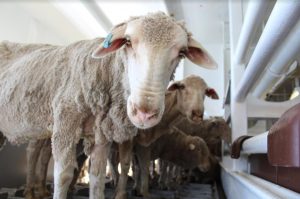 A NATIONAL system-wide analysis of the sheep and cattle live export supply chains is being conducted to identify what creates inefficiencies and critical delays that increase costs or restrict supply.
A NATIONAL system-wide analysis of the sheep and cattle live export supply chains is being conducted to identify what creates inefficiencies and critical delays that increase costs or restrict supply.
Funded by Meat & Livestock Australia and LiveCorp, and matched dollar-for-dollar by the Australian Government, the analysis by CSIRO will identify current and potential bottlenecks across the supply chain by time of year – from property to export depot, export port and overseas receiving port.
CSIRO scientists have already begun consultation with key producers, export yard and port operators, exporter groups, and government agencies, seek to gather information and past experiences from:
- impacts on supply and costs across the supply chain – from biosecurity restrictions, port congestion and competition from other port users, and
- impacts from regulations, country specific health protocols and technical trade barriers.
Discussions will also cover existing capacities and plans to expand, consolidate, and proposals to build new facilities; and new options that would overcome these bottlenecks and inefficiencies.
The project will develop options and scenarios to improve supply chains that overcome inefficiencies (including infrastructure upgrades, regulatory and supply management changes) and test their effectiveness in reducing whole of supply chain logistics costs. The analysis and those options will be provided at the end of the project to all stakeholders.

CSIRO’s Dr Chris Chilcott.
CSIRO research leader Dr Chris Chilcott said the Australian livestock industry was a complex set of supply chains between farms, feedlots, processing export deports, ports and export markets.
“Live export represents a significant proportion of the agricultural supply chain, particularly in the NT, WA and Qld, with nearly one million beef and almost two million sheep exported annually,” Dr Chilcott said.
“A significant proportion of these live export supply chains are in regions with sparse road networks coupled with long distance transport, seasonal access issues, limited port and shipping capacities – presenting significant differences in supply chain paths by month and by year.
“Disruptions to existing supply chains or market changes substantially reduce the ability for the industry to adapt under these challenges. Infrastructure investment and regulation changes can substantially reduce the impacts of bottlenecks, and an evidence based approach provides government and industry with the tools to make decisions on infrastructure investments.”
This project will contribute to CSIRO’S ongoing work developing the Transport Network Strategic Investment Tool (TraNSIT) for Australian agriculture.
Dr Chilcott will discuss the project during a presentation at the LIVEXchange 2017 industry conference in Perth next week.
Source: CSIRO

Many tax payers are unaware that over the past 10 years, the Federal Government has forked out between $40-$50M every year to prop up the live export trade, but they continue to cry poor when it comes to improving lives of ordinary Australians such as health, education and disability services.